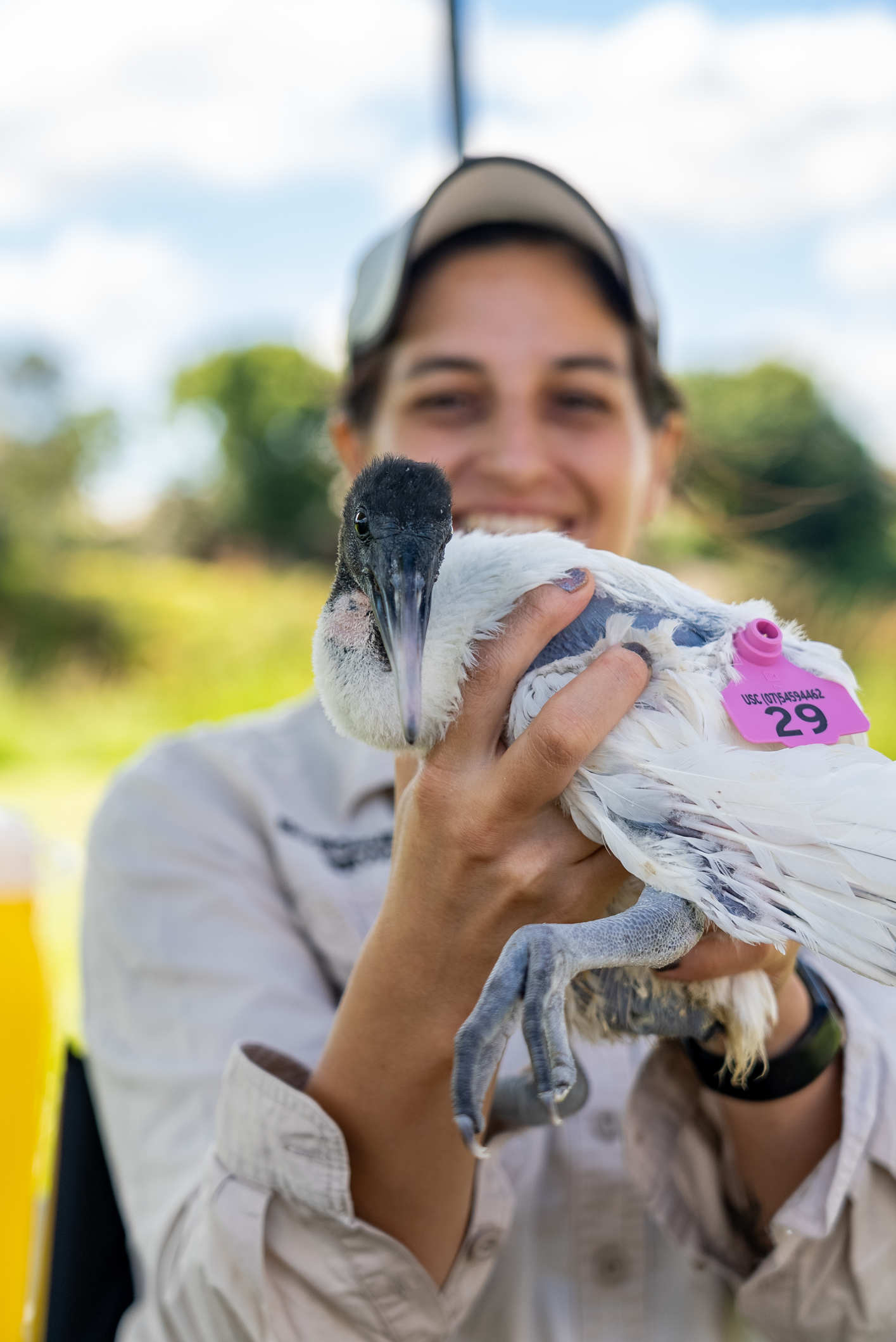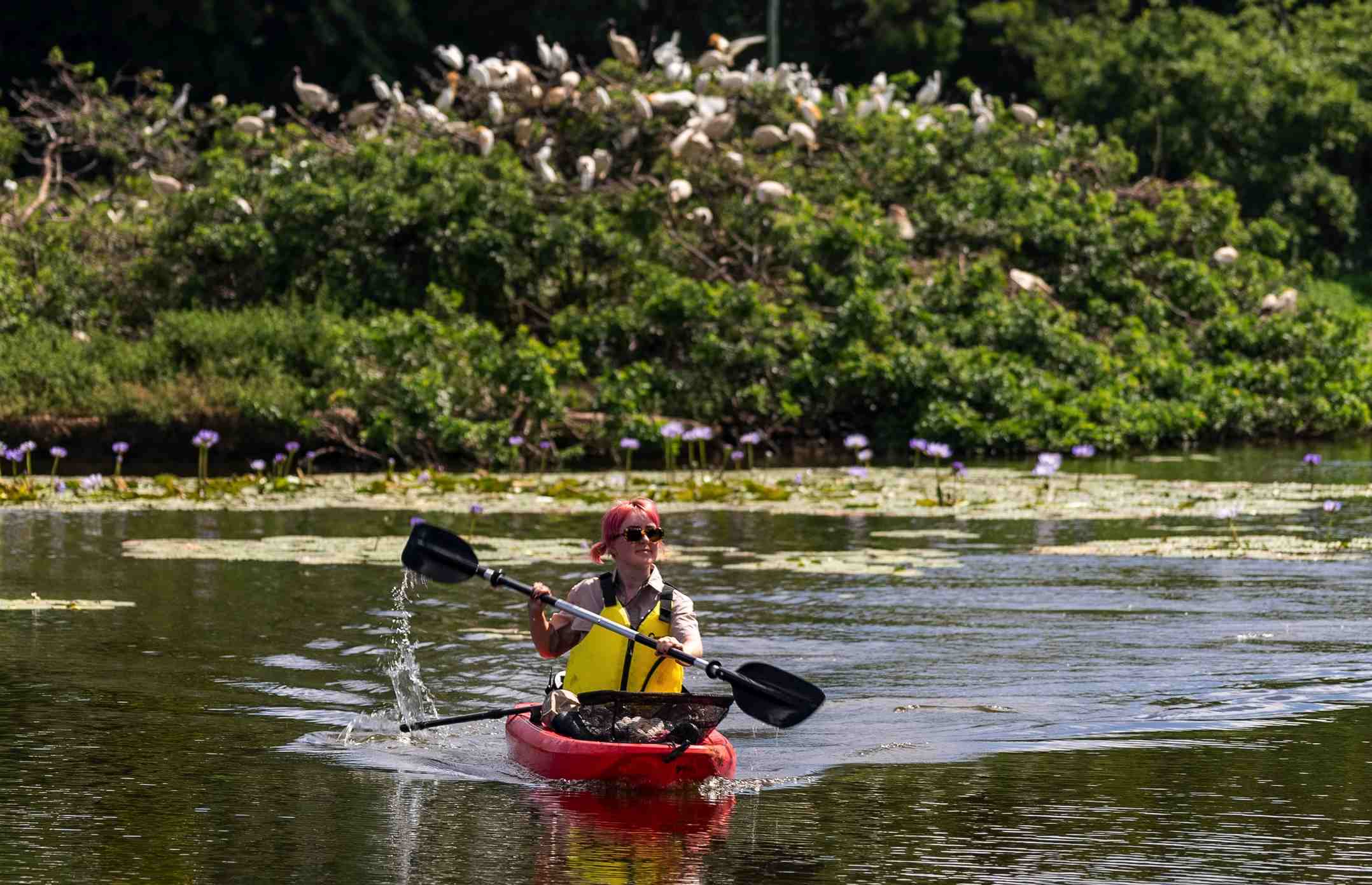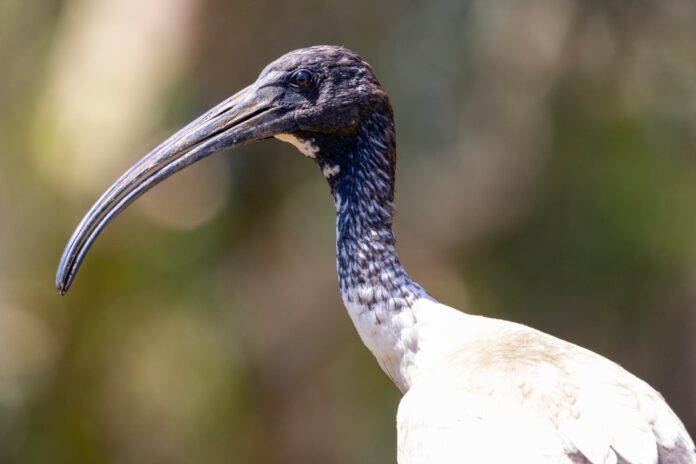Smelly, noisy and messy: Australia’s native white ibis has a bad reputation.
Now, a research project is trying to better understand how ‘bin chickens’ breed, feed and move around urban areas and if rubbish tips are the key to their survival.
University of the Sunshine Coast researchers are working with Moreton Bay Regional Council to capture and tag up to 500 individual birds.
Some will also be equipped with GPS devices to track their movements.
Residents and visitors have been asked to play their part by reporting any sightings of ibis with bright pink or blue tags via a free citizen science app called Big City Birds. They can even choose a name for the bird.
Lead researcher Dr Dominique Potvin said it was part of a larger UniSC project that will use blood samples and other measurements in the hope the much-maligned birds, also known as ‘dump ducks’ and ‘tip turkeys’, will give up more secrets.
If there was a gold medal in the bird kingdom for adaptability, the ibis would be a serious contender.

Once found in inland wetlands, this protected species is now a bold, opportunistic scavenger that has taken over urban streets, parks and rubbish dumps.
“The Australian white ibis is a common species across cities and towns all over Australia, with dense numbers occupying urban centres. However, almost nothing is known about how it is affected by different environmental variables,” Dr Potvin said in a UniSC press release.
The researchers were focused on the Moreton Bay region and what affects ibis colony size, genetic diversity, bloodlines and the general health of the birds.
The research team will visit more than 30 documented breeding sites across the region once every two months during the next year, to collect observational survey data including number of nests, eggs, juveniles and adults at each colony site.
Dr Potvin said the research would help fill knowledge gaps about the birds, as well as identify breeding hotspots to assist the council to develop an evidence-based white ibis management strategy.
“Breeding and feeding sites for Australian white ibis occur within densely populated human centres, creating or magnifying potential conflict between the birds and the community due to their colony noise, smell and the damage that they cause to local vegetation,” she said.
“We want to find out what is the optimal breeding habitat for these birds, and where do these occur in the region.
“Are Australian white ibis in the region residential or mitigatory, and what are the population demographics and meta-population dynamics?
“Do the birds breed in the same locations year after year, what is the reproductive rate at different sites and are rubbish tips really are the key to their survival in the urban landscape?”

Moreton Bay Regional Council’s adaptive management strategy for the birds includes manipulating urban habitats, restricting artificial food supplies and management throughout the breeding season.
Mayor Peter Flannery said the research would help council to manage ibis numbers in urban areas and find out more about how they’ve managed to adapt so well to their changing environment.
“The ibis has become affectionately known as the ‘bin chicken’ for their ability to essentially survive and thrive off urban food sources,” he said.
“While there is a beauty in all things, their numbers have grown rapidly in urban areas, earning themselves a title of being a nuisance for residents and workers.
“The work we’re doing with the help of the University of the Sunshine Coast could become world-leading research to help manage their numbers in urban areas and offer some insight into how we can better protect their natural habitat.
“I urge locals to help contribute to the research by taking photos of the local ibis population when you’re out and about and uploading them to the free Big City Birds app.”
Help keep more great Sunshine Coast stories by subscribing to our free daily news feed. Go to Subscribe at the top of this story and add your name and email. It’s that simple.





